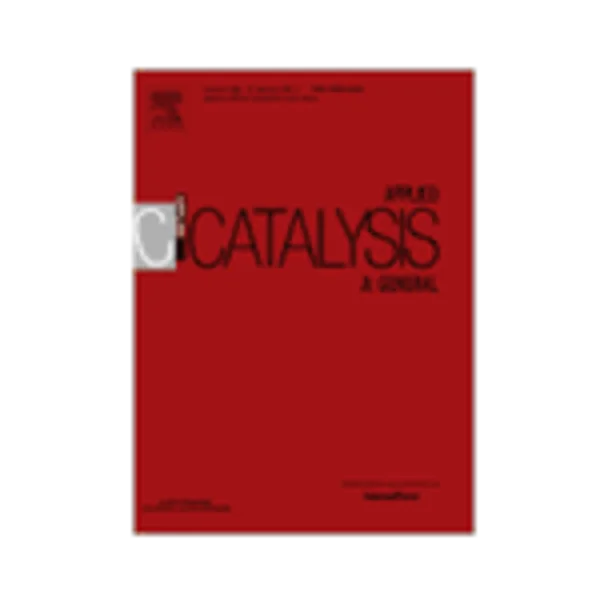-
inactivation path during the copper (ii) catalyzed synthesis of questiomycin a from oxidation of 2-aminophenol
جزئیات بیشتر مقاله- تاریخ ارائه: 1392/07/24
- تاریخ انتشار در تی پی بین: 1392/07/24
- تعداد بازدید: 1057
- تعداد پرسش و پاسخ ها: 0
- شماره تماس دبیرخانه رویداد: -
the catalytic oxidation of 2-aminophenol (oap) to 2-amino-3h–phenoxazin-3-one (apx, questiomycin a) was the object of numerous studies partly due to antimicrobial properties of questiomycin a and mostly because it can be used as a model for the synthesis of the naturally occurring antineoplastic agent actinomycin d. several copper complexes were used as dioxygen and/or substrates activators in order to mimic the activity of phenoxazinone synthase, but the reported assays failed to provide reasonable mechanistic features in media compatible with natural conditions. the main purposes of our work were to use simple copper salts to perform oxidation of oap in oxygenated aqueous solutions and to develop a reaction scheme able to explain the low yields in apx along with the operational inactivation of the catalyst. a 11-step kinetic model able to describe the inactivation of copper(ii) catalyst during oxidation of oap to apx in oxygenated solutions was developed, and the rate constants for both catalytic and non-catalytic branch were estimated either experimentally or using a computing program for detailed kinetic simulation. it was demonstrated that the inactivation path can be assigned to formation of the stable bis(o-iminosemiquinonato)copper(ii) complex, a compound reported as a moderate antimicrobial agent.
مقالات جدیدترین رویدادها
-
استفاده از تحلیل اهمیت-عملکرد در ارائه الگوی مدیریت خلاقیت سازمانی و ارائه راهکار جهت بهبود
-
بررسی تاثیر ارزش وجوه نقد مازاد بر ساختار سرمایه شرکت های پذیرفته شده در بورس اوراق بهادار تهران
-
بررسی تأثیر سطح افشای ریسک بر قرارداد بدهی شرکت های پذیرفته شده در بورس اوراق بهادار تهران
-
بررسی تأثیر رتبه بندی اعتباری مبتنی بر مدل امتیاز بازار نوظهور بر نقد شوندگی سهام با تأکید بر خصوصی سازی شرکت ها
-
تأثیر آمیخته بازاریابی پوشاک ایرانی بر تصویر ذهنی مشتری پوشاک ایرانی (هاکوپیان)
-
تحلیل پوش آور مخازن بتنی زمینی و تعیین ضریب رفتار ناشی از شکل پذیری
-
توسعه شهری پایدار از ایده تا اجرا
-
تحلیل و بررسی علل بالا بودن تعداد متوفیات و تصادفات در مهرماه در استان آذربایجان غربی و راهکارهای کاهش آن
-
کاربرد مدل سازی اطلاعات ساختمان (bim) در گودبرداری
-
a new methodology for numerical simulation of geothermal down-hole heat exchangers
مقالات جدیدترین ژورنال ها
-
مدیریت و بررسی افسردگی دانش آموزان دختر مقطع متوسطه دوم در دروان کرونا در شهرستان دزفول
-
مدیریت و بررسی خرد سیاسی در اندیشه ی فردوسی در ادب ایران
-
واکاوی و مدیریت توصیفی قلمدان(جاکلیدی)ضریح در موزه آستان قدس رضوی
-
بررسی تاثیر خلاقیت، دانش و انگیزه کارکنان بر پیشنهادات نوآورانه کارکنان ( مورد مطالعه: هتل های 3 و 4 ستاره استان کرمان)
-
بررسی تاثیر کیفیت سیستم های اطلاعاتی بر تصمیم گیری موفق در شرکتهای تولیدی استان اصفهان (مورد مطالعه: مدیران شرکتهای تولیدی استان اصفهان)
-
چسبندگی هزینه، تمرکز مالکیت و ناکارایی سرمایه گذاری در شرکت های پذیرفته شده در بورس اوراق بهادار تهران
-
ارزیابی فاکتورهای مالون دی آلدئید، 8ایزو پروستاگلاندین f2α 8 ، هیدروکسی داکسی گوانوزین و گروه های پروتئین کربونیل به عنوان شاخص های استرس اکسیداتیو در افراد روزه دار در شهر تهران
-
بررسی میزان و نوع رابطه فرهنگ رشته ای با میزان پایبندی به ارزش های اخلاقی علمی در بین دانشجویان (موردمطالعه: دانشجویان دانشگاه ایلام)
-
قاچاق انسان در نظام کیفری جمهوری اسلامی ایران
-
بررسی عوامل اجتماعی موثر بر نگرش دانشجویان به فعالیت های سیاسی در دانشگاه اسلامی واحد بندرعباس




سوال خود را در مورد این مقاله مطرح نمایید :